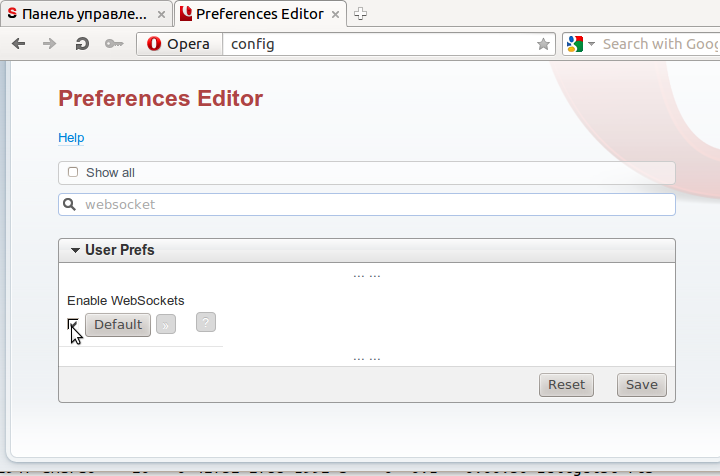Cloud news
Table of contents:
It's time to fix this problem. The component called selecon-web (this is not illiteracy, this is an abbreviation for Selectel Console) was rewritten to haskell, as a result of which we have significantly reduced processor consumption, and the users have improved the speed of the console. Note that the actual output speed remains the same (since the console is still a serial port, the output speed is fixed, but the console opening time and the time for which the client’s port in the client’s browser has accelerated) has accelerated.
We made it multithreaded (goodbye, GIL), used Haskelevsky websockets instead of Python's gevent-socketIO, and, oh, a miracle, 13th Chrome (and all subsequent ones) worked.
But IE9 does not support web sockets. Sorry, but we will not dance more with imitation of sockets through the flash. Use Opera, Chrome, FF, Safari, IEtab ... Maybe it works in IE10, but we don’t have it live to check it out.
')
By the way, to the question of how to enable web sockets.
For Chrome and Safari, web sockets are enabled by default.
For Firefox, newer versions of websockets are included; for older ones, the instructions are similar to Opera (or upgrade).
For Opera: type in the new tab about: config, in the tab with the options type in the search field websocket, put a daw, restart the browser.
Below is a picture:

Since CentOS is a free build of RHEL 5.8, the most complete list of changes can be found here: docs.redhat.com/docs/en-US/Red_Hat_Enterprise_Linux/5/html/5.8_Release_Notes/index.html
From what seemed most noticeable to me, the iloads reload commands, the inclusion of iotop in the distribution kit, the support for resizing the ext4 file system with the -r option to lvresize.
Symptoms: when a disk was connected in “auto” mode, the disk number (and the letter with which it appeared in the system) increased by one each time. Connect with a "smaller" number was impossible. When the limit on the number of disks was reached, a Connection Limit Reached message was returned.
The problem was eliminated, the disks can be connected as many times as necessary with any free numbers, and “auto” will assign the lowest possible disk number.
- Console update
- CentOS 5.8
- Fix connection errors
Console
After we launched the console almost a year has passed. For this year, the chrome has been updated, changed the version of websockets. And the console remained working only in Firefox and Opera, having offended at the same time Mac users who have Safari as their main browser (inside Safari is the same “engine” as in Chrome - WebKit). Plus, the console was not very fast.It's time to fix this problem. The component called selecon-web (this is not illiteracy, this is an abbreviation for Selectel Console) was rewritten to haskell, as a result of which we have significantly reduced processor consumption, and the users have improved the speed of the console. Note that the actual output speed remains the same (since the console is still a serial port, the output speed is fixed, but the console opening time and the time for which the client’s port in the client’s browser has accelerated) has accelerated.
We made it multithreaded (goodbye, GIL), used Haskelevsky websockets instead of Python's gevent-socketIO, and, oh, a miracle, 13th Chrome (and all subsequent ones) worked.
But IE9 does not support web sockets. Sorry, but we will not dance more with imitation of sockets through the flash. Use Opera, Chrome, FF, Safari, IEtab ... Maybe it works in IE10, but we don’t have it live to check it out.
')
By the way, to the question of how to enable web sockets.
For Chrome and Safari, web sockets are enabled by default.
For Firefox, newer versions of websockets are included; for older ones, the instructions are similar to Opera (or upgrade).
For Opera: type in the new tab about: config, in the tab with the options type in the search field websocket, put a daw, restart the browser.
Below is a picture:

CentOS 5.8
The CentOS 5 update was released recently and it is already waiting for customers in the product. 5.7 remains available. Existing users will be able to get CentOS 5.8 out of 5.7 using the yum update command.Since CentOS is a free build of RHEL 5.8, the most complete list of changes can be found here: docs.redhat.com/docs/en-US/Red_Hat_Enterprise_Linux/5/html/5.8_Release_Notes/index.html
From what seemed most noticeable to me, the iloads reload commands, the inclusion of iotop in the distribution kit, the support for resizing the ext4 file system with the -r option to lvresize.
Connecting drives
The annoying negligence, which led to the fact that the disk could be connected "once for the whole life of the machine" is eliminated.Symptoms: when a disk was connected in “auto” mode, the disk number (and the letter with which it appeared in the system) increased by one each time. Connect with a "smaller" number was impossible. When the limit on the number of disks was reached, a Connection Limit Reached message was returned.
The problem was eliminated, the disks can be connected as many times as necessary with any free numbers, and “auto” will assign the lowest possible disk number.
Source: https://habr.com/ru/post/139798/
All Articles